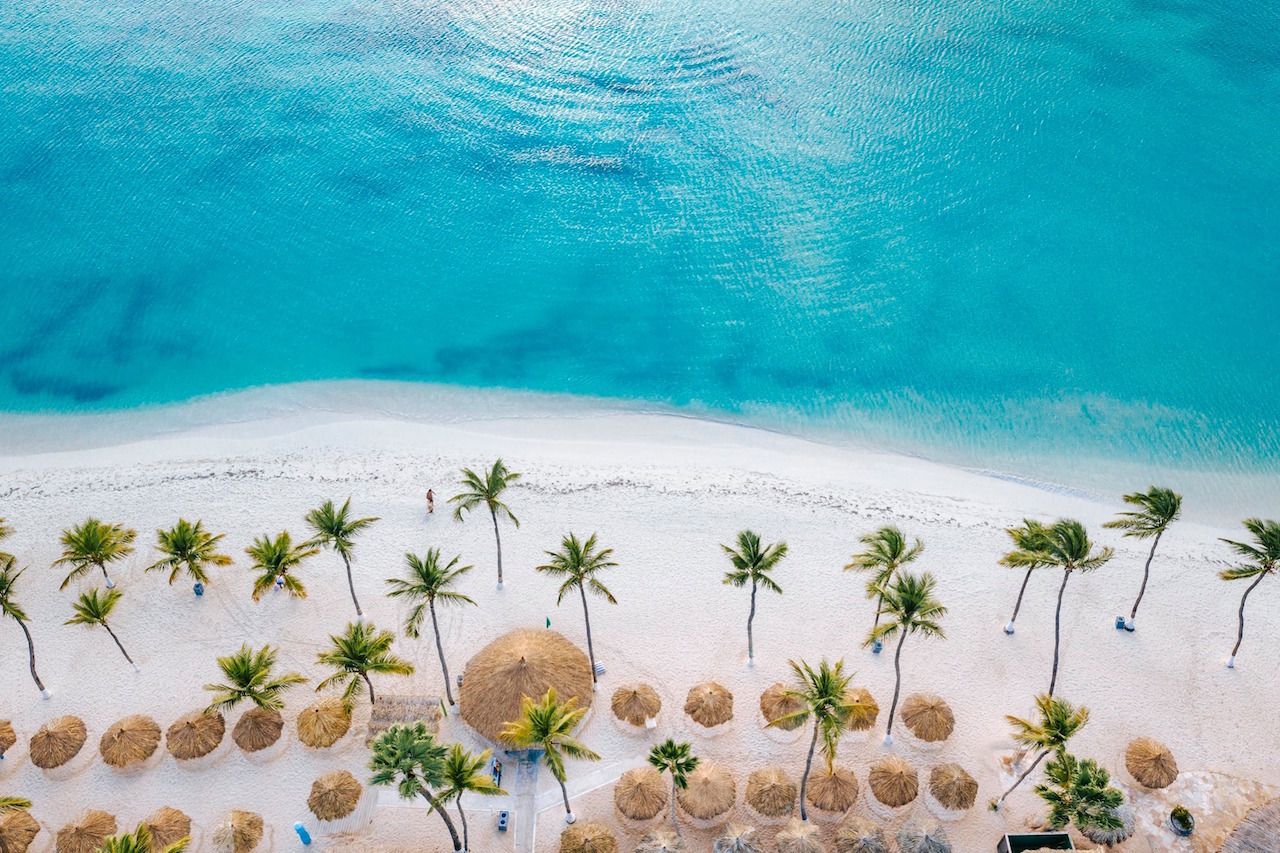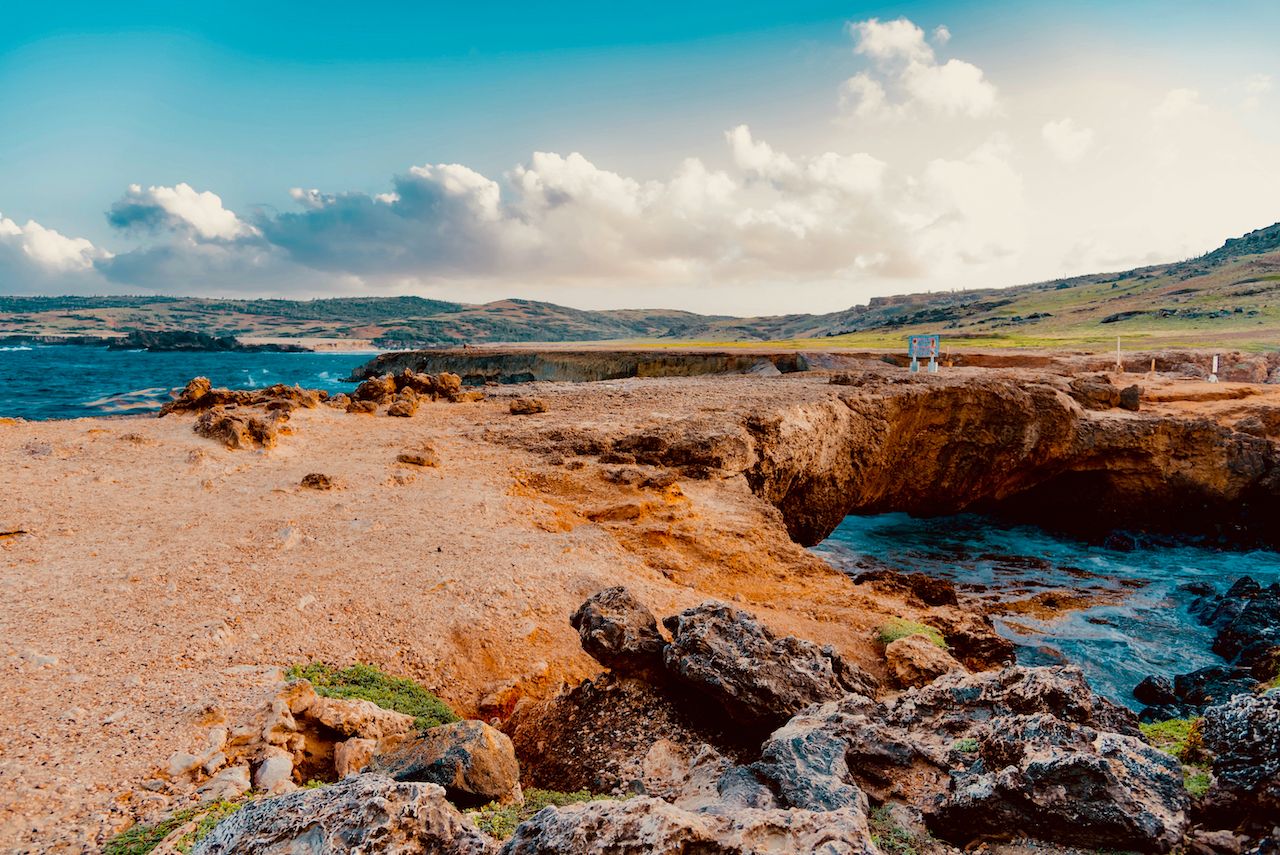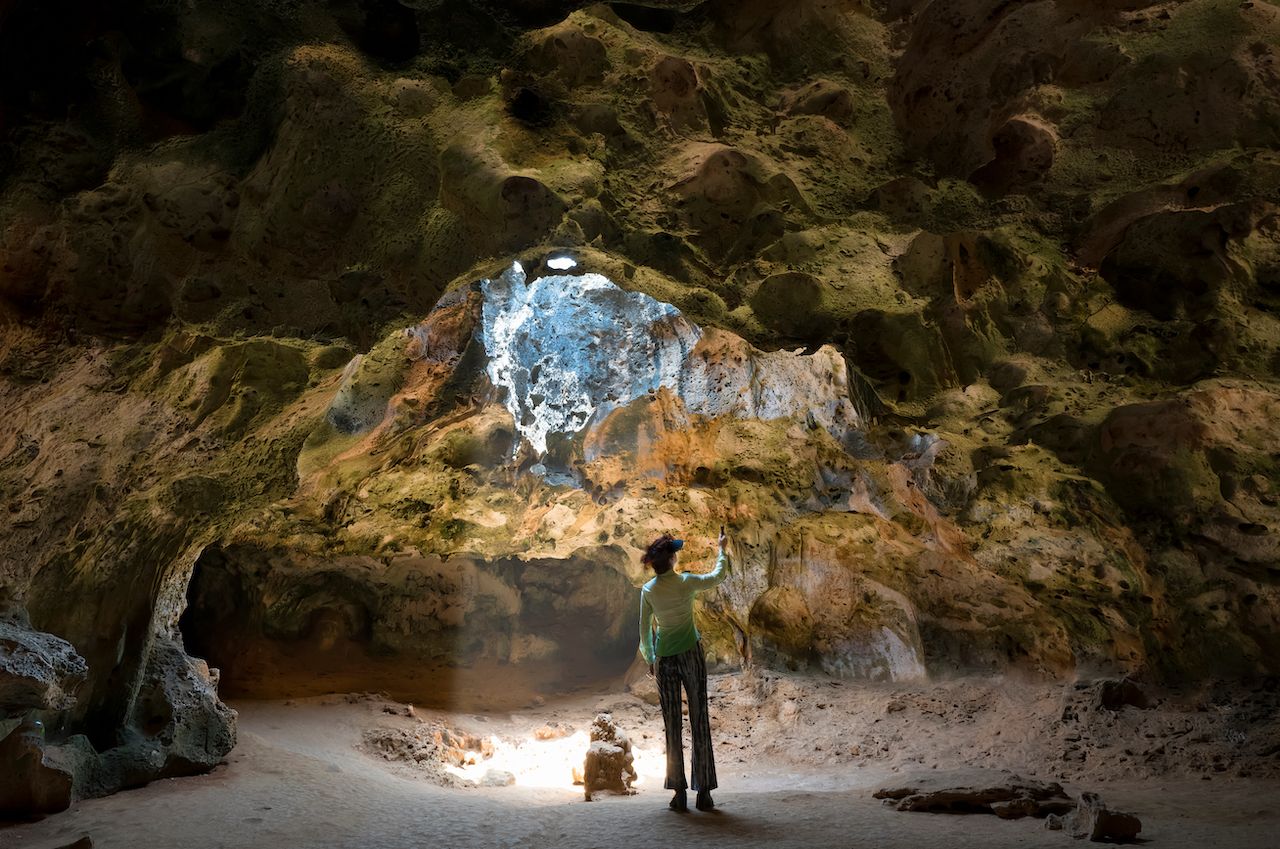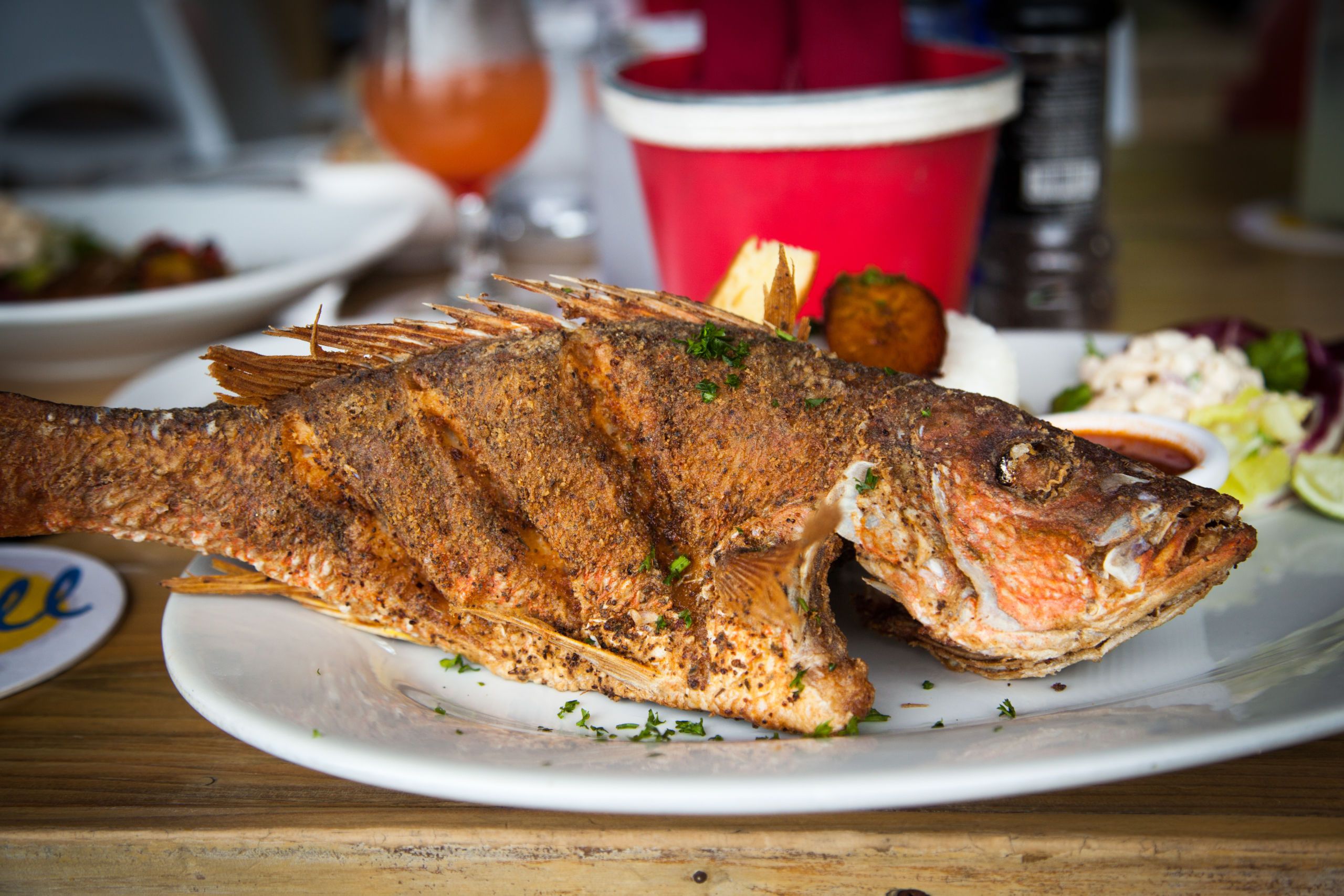This year hasn’t exactly been a typical one. Travel options for US citizens are significantly limited, but there’s one silver lining that we should be seriously excited about — much of the Caribbean is open and welcoming tourists. That means dozens of islands are at your fingertips, and your biggest conundrum is simply choosing the right one.

Everything You Need to Know About Visiting Aruba This Summer
Aruba was one of the first islands to reopen on July 10, and it’s truly unique among its neighbors. Not simply a tropical beach getaway, Aruba is actually half-desert, meaning there are some pretty thrilling outlets for adventure and adrenaline. Its Dutch culture, architecture, and cuisine is evident all around the island, making it a colorful alternative if you can’t make it to Amsterdam.
Aruba calls itself “one happy island,” and this summer, it’s certainly a better place to spend your summer than your “one monotonous living room.” From required COVID-19 tests to how to actually get there, here’s everything you need to know about visiting Aruba this summer.
- Before you go and getting there
- COVID-19 safety measures on the island and where to stay
- How to enjoy Aruba’s outdoors while social distancing
Before you go and getting there

Photo: Visit Aruba
An Aruba vacation in 2020 isn’t as simple as landing on the tarmac, strolling out of the airport, Ubering to a resort, and posting up poolside. A range of new safety measures are in place that visitors will have to thoroughly understand before booking a flight, as well as new procedures for guests to keep in mind once they’ve made it onto the island.
The first step is filling out the embarkation/disembarkation card online, which consists of five components: you’ll have to fill out some basic personal information; complete a health assessment, including disclosing whether you’ve been in contact with anyone with COVID-19; upload the results of a negative COVID-19 test and proof of insurance that covers COVID-19; and consent to Aruba’s government mandates, including any health screenings or testings that may be required upon your arrival. In the event that you’re unable to take a COVD-19 test within 72 hours of your departure to Aruba, you can opt to take a test at the airport when you arrive, at your own expense. If you choose to do this, you must quarantine for up to 24 hours while you await your results.
As soon as you book your trip to Aruba, you’re encouraged by the government to start the ED card process. Once complete, you will receive email confirmation of travel approval, which must be shown either digitally or on a printed page before boarding your flight.
Assuming you’ve already shown proof of a negative COVID-19 test, your arrival in Aruba should be relatively smooth. Consistent with all other pandemic-era flight experiences, all passengers en route to Aruba must wear face masks, but masks are not required after you exit the airport. The only safety measure you will encounter upon arrival is a temperature check at the airport. Once you get the all-clear, you’ll be free to start exploring the island.
COVID-19 safety measures on the island and where to stay

Photo: Boardwalk
At hotels, restaurants, car rentals, bars, casinos, retail shops, and tour operators across the island, look for the Aruba Health & Happiness Code certification. This seal ensures that the business has taken necessary precautions to create a safe environment for employees and guests.
If you’re worried about finding lodging — don’t be. Most of the island’s resorts opened in June, or will be opening on a rolling basis throughout July. The Renaissance and Boardwalk Boutique Hotel, for example, opened last month, while the Hilton opened on July 9 and the Tamarijn will open in August. Divi Resorts, which owns a variety of properties in Aruba and throughout the Caribbean, will be reopening many of its Aruba properties on July 10, including Divi Aruba Phoenix Beach Resort, Divi Village Golf & Beach Resort, and Divi Dutch Village Beach Resort.
In addition to Aruba’s official certification, some hotel groups have implemented their own programs to reassure guests. Divi Hotels, for example, has implemented a new Clean Check program with a range of health and sanitation criteria. In lobbies and restaurants, floor decals and roped off areas will ensure that social distancing is observed. At pools and on the beach, chairs will be spaced out at a safe distance, restaurants and bars will have tables placed at least six feet apart, and resort activities like diving and golf will also have new protocols in place. If you do stay at a Divi hotel, you can expect to see the Clean Check symbol pretty much everywhere — from room doors signifying that the room is ready for occupancy to signs around the property that enumerate sanitation guidelines.
These hotels are under no illusion that this summer will be anything like previous summers. In an attempt to encourage bookings, many hotels are offering special discounts designed to convince travelers to visit. The Tamarijn, for example, is offering 35 percent off all inclusive rates, plus a $200 amenities credit to use with various tour, car rental, or restaurant experiences.
The Renaissance is taking a slightly different approach. Since Aruba’s required COVID-19 insurance costs $15 per person, per day, it’s deducting $30 from the room rate to help offset those extra fees. It probably won’t completely nullify the insurance fees, but it’s better than nothing.
How to enjoy Aruba’s outdoors while social distancing

Photo: DiegoMariottini/Shutterstock
To fully enjoy Aruba, you don’t need to set foot in its capital of Oranjestad, or even spend any time at the hotel pool. Aruba might be a tropical island, but its unique geography more resembles a desert, meaning there are plenty of opportunities for adventure that don’t involve your fellow resort guests.
Much of the island’s north and east coasts are defined by craggy rock formations, prickly cacti, natural pools, and rugged terrain, and exploring it is both safe and thrilling. Jeep tours and UTV rentals allow you to explore the island’s unique ruins and rock formations without worrying about getting too close to people not in your party. Renting a car might be more hassle than roasting on the beach for six days, but it’s actually a perfect way to explore the entire island and escape the confines of your resort. Since the entire island is only 70 square miles and takes about 40 minutes to drive from end to end, a car will allow you to explore Aruba at your own leisure, without relying on public transportation or tour companies.
A jeep tour will take you along the outskirts and coastline of Arikok National Park, but if you wanted, you could spend a few days exploring the park. Arikok, located on the west of the island, comprises about 20 percent of Aruba’s total landmass. The park is home to several natural geographical wonders, like the Conchi Natural Pool — a pool protected from the sea by the surrounding rocks — and the Arikok Hilltop, from which you can enjoy sweeping views of the island. There are also beaches that are perfect for surfing, bodyboarding, and picnics.

Photo: Serge Yatunin/Shutterstock
Aruba’s caves are probably one of its most unique geographical features. Mostly located inside the national park, the caves are both a great adventure and an escape from the summer heat. Fontein Cave, located along the north coast, is a series of limestone caves with evidence of pictographs left by the Caquetio indigenous people, and other graffiti from European settlers. Guadirikiri Cave is also worth a visit. Two large, dark chambers allow sunlight in through narrow roof openings, producing a stunning illuminating effect.

Photo: Ivana Lalicki/Shutterstock
From the California Lighthouse on the northwest coast to the local seafood eateries in the south, there’s plenty of ways to get the full Aruba experience while also escaping the crowds. Food is a big part of this. Aruba’s warm climate means outdoor dining is always the default, making for a safer eating experience. Zeerovers in Savaneta, on the south coast, has the best shrimp on the island, and you can dine under a canopy of palms at Papiamento. Shrimp, wahoo, snapper, barracuda, and kingfish are among the island’s most popular dishes, and you can’t leave without trying keshi yena, which is a traditional Dutch meal consisting of a baked ball of cheese stuffed with spiced meat.